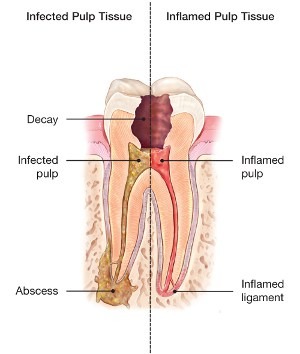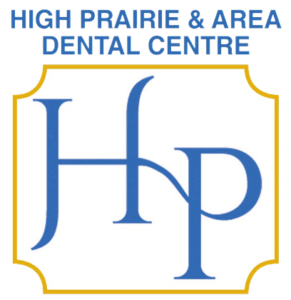A root canal procedure treats the soft tissue inside your tooth that we call pulp. This essential part contains blood vessels, nerves, and connective tissue that help your tooth’s root develop in its early stages. Your fully grown tooth can function without pulp, but infections in the pulp can lead to serious complications if left untreated.
Several signs that indicate you need root canal treatment
Persistent tooth pain, especially when you have to chew

Long-lasting sensitivity to hot or cold temperatures

Swollen or tender gums

Tooth discoloration

Development of a pimple-like bump on the gums
Step-by-Step Root Canal Procedure

Your dentist will take detailed X-rays to create a clear treatment plan and check how much your tooth is damaged. This step helps identify any problems that might affect the procedure.

The treatment starts when your dentist gives you local anesthesia to keep you comfortable. Your tooth and surrounding area will become completely numb. A thin, flexible rubber dam goes over the affected tooth to keep it dry and prevent saliva from getting in.

Your dentist makes a small opening in the tooth’s crown to reach the infected pulp chamber. Special instruments called files help remove the damaged pulp, blood vessels, and nerves from inside your tooth. This cleaning takes the most time because your dentist needs to clean all the canals really well.

The root canals need proper disinfection after removing the infected tissue. Your dentist might use topical antibiotics to stop any reinfection. The cleaned and shaped canals get filled with a material called gutta-percha. This material works great because it’s easy to use, shows up on X-rays, and has low toxicity.

The root canals need proper disinfection after removing the infected tissue. Your dentist might use topical antibiotics to stop any reinfection. The cleaned and shaped canals get filled with a material called gutta-percha. This material works great because it’s easy to use, shows up on X-rays, and has low toxicity.

The root canals need proper disinfection after removing the infected tissue. Your dentist might use topical antibiotics to stop any reinfection. The cleaned and shaped canals get filled with a material called gutta-percha. This material works great because it’s easy to use, shows up on X-rays, and has low toxicity.

Your dentist takes several X-rays during the procedure to check if the canals are properly cleaned, shaped, and filled. These X-rays are great checkpoints that verify the canal’s working length and confirm each step is done right.
Don’t let tooth pain hold you back! Contact High Prairie & Area Dental Centre near you for to schedule your root canal therapy appointment. Our caring team is here to provide the expert care you need for a healthier smile. Reach out now and take the first step towards relief and dental wellness!
WHY CHOOSE HIGH PRAIRIE & AREA DENTAL CENTRE?
At High Prairie & Area Dental Centre in High Prairie, we are committed to providing exceptional Root Canal services in your community. Located conveniently in High Prairie, our friendly and skilled team is focused on your comfort and tailored treatment options to ensure a positive experience for you and your family.
Key Reasons to Choose Us:
- Experienced Team: Our dentists and staff are highly trained and dedicated to your dental health.
- Comprehensive Services: From routine check-ups to cosmetic and emergency dentistry, we offer a wide range of services to meet all your needs.
- State-of-the-Art Technology: We utilize the latest dental technology for efficient and effective treatments.
- Patient-Centric Care: Your comfort is our priority, and we strive to make each visit a pleasant experience.
- Convenient Location: Easily accessible dental care is just around the corner, making it simple for you to prioritize your oral health.

Our Core Services

Implants & Dentures
Tooth loss from decay or injury can be distressing, but High Prairie & Area Dental Centre near you offers options to restore your beautiful smile. Discover if implants or dentures are right for you!

Neuromodulators: Xeomin
Halt the effects of aging on your skin with neuromodulator treatment. Reduce wrinkles, crow’s feet, and more. Stop by today to see if this treatment is right for you!

Oral Sedation
Don’t let dental anxiety hold you back from getting the care you need. At High Prairie & Area Dental Centre, located near you, we offer oral sedation methods to help reduce stress and eliminate pain during your visit.

If you have a severely damaged or decayed tooth, a root canal procedure at High Prairie & Area Dental Centre near you can help. Our doctors will remove the infected pulp and nerve, sealing the tooth to restore your smile.

Crowns & Dental Bridges
Dental crowns at High Prairie & Area Dental Centre near you restore the shape and function of your tooth, looking and feeling just like the original. If you’re missing a tooth, our bridges can replace it using abutment teeth as anchors.

Teeth Whitening
Dental crowns at High Prairie & Area Dental Centre near you restore the shape and function of your tooth, looking and feeling just like the original. If you’re missing a tooth, our bridges can replace it using abutment teeth as anchors.

Wisdom Teeth Extraction
Experiencing jaw pain, swollen gums, or difficulty opening your mouth? It might be your wisdom teeth. Visit High Prairie & Area Dental Centre near you to book an appointment and explore your options!

At High Prairie & Area Dental Centre near you, we offer re-care appointments, teeth cleanings, patient education, and X-rays to keep your dental health in top shape!
Our Reviews
Branden Regal
High Prairie & Area Dental Centre is fantastic! The staff is friendly and made my dental cleaning a breeze. Highly recommend for anyone in High Prairie!
Daivee
The team was professional and made me feel at ease during my procedure. It’s the best dental clinic near me!
Arden Orosz
Very impressed with High Prairie & Area Dental Centre! The facility is clean, and the staff is knowledgeable. They explained my options clearly. A great choice for dental care!
FAQs
Common signs indicating the need for a root canal include persistent tooth pain (especially while chewing), prolonged sensitivity to hot or cold temperatures, swollen or tender gums, tooth discoloration, and the development of a pimple-like bump on the gums. If you experience these symptoms, it’s best to consult a dentist promptly.
Recent advancements include digital imaging systems like Cone Beam Computed Tomography (CBCT) for more accurate diagnostics, laser-assisted procedures for better disinfection, and antimicrobial photodynamic therapy (aPDT) for enhanced cleaning. These technologies improve treatment precision and often result in quicker healing times.
Contrary to popular belief, modern root canal procedures are typically painless for most patients. Local anesthesia is used to numb the area, ensuring minimal discomfort during treatment. The procedure actually relieves the pain caused by the infected or inflamed pulp.
With proper care and regular dental check-ups, a root canal treated tooth can last for 8 to 10 years or even longer. In fact, studies show that about 90% of root-treated teeth survive for up to a decade, making it an effective long-term solution for severe tooth damage or infection.
A root canal typically involves five main steps: initial examination and X-rays, numbing and preparation, cleaning the infected pulp from the canal, filling and sealing the canal, and finally, crown placement. The entire process may take one to three sessions, depending on the complexity of the case.



